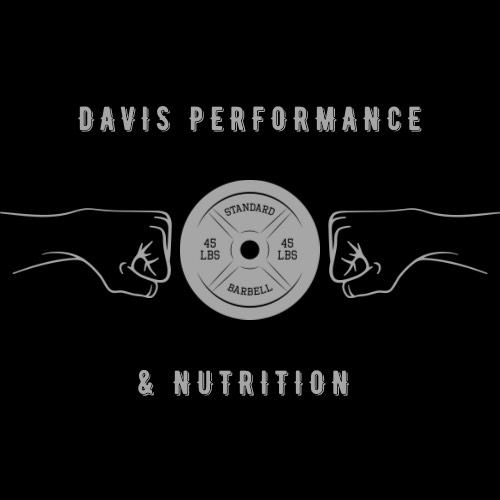Strength and Conditioning Blog of Blogs

Finding Your Perfect Workout Routine: A Step-by-Step Guide
“It’s hard to beat a person who never gives up.” – Babe Ruth
Introduction:
Routine is key to achieving fitness goals, but figuring out the right workout routine for you can be a daunting task. With countless options available, it's easy to feel overwhelmed and unsure of where to start. In this comprehensive guide, we will break down the process of finding your perfect workout routine into easy-to-follow steps. We will explore the importance of assessing your fitness goals, considering your preferences and limitations, and creating a balanced plan that includes strength training, cardiovascular exercise, and flexibility work. By the end of this guide, you will have the knowledge and tools needed to craft a workout routine that is both effective and enjoyable, setting you up for long-term success in your fitness journey.
Key Takeaways:
Identify Your Goals: Before creating a workout routine, determine your fitness goals whether it's weight loss, muscle gain, or simply improving overall health.
Assess Your Fitness Level: Understanding your current fitness level will help you choose appropriate exercises and design a routine that challenges you without causing injury.
Experiment with Different Workouts: Try various types of exercises such as cardio, strength training, yoga, or Pilates to find what you enjoy and what works best for your body.
Create a Balanced Routine: Incorporate a mix of cardiovascular exercise, strength training, flexibility work, and rest days to ensure a well-rounded and effective workout plan.
Listen to Your Body: Pay attention to how your body responds to certain exercises and adjust your routine as needed to prevent burnout and avoid injury.

Assessing Your Fitness Level
Fitness: How to Measure Your Current Fitness
Now is the time to assess your current fitness level to ensure you create a workout routine that suits your needs. There are several ways to measure your fitness, including testing your endurance, strength, flexibility, and body composition. You can use tests like the mile run, push-ups, sit and reach, and body fat percentage measurements to get a comprehensive view of your physical condition.
Setting Realistic Fitness Goals
Now that you have a better understanding of your fitness level, it's crucial to set clearly defined and achievable fitness goals. Without clear objectives, it's easy to lose motivation or push yourself too hard, leading to burnout or injuries. Start by determining what you want to achieve, whether it's running a 5k, losing a certain amount of weight, or increasing your strength. Make sure your goals are realistic and consider your current lifestyle, time commitments, and limitations.
The key to setting realistic fitness goals is to make them specific, measurable, attainable, relevant, and time-bound (SMART). For example, instead of saying you want to 'lose weight,' a SMART goal would be 'I will lose 10 pounds in three months by exercising three times a week and following a balanced diet.' This approach helps you stay focused and motivated throughout your fitness journey.
Factors to Consider When Choosing a Workout Routine
Even with so many workout options available, finding the perfect routine can feel overwhelming. Factors such as your preferences, lifestyle, health, and physical limitations all play a crucial role in determining the right fitness plan for you. By carefully evaluating these factors, you can tailor a workout routine that not only helps you reach your fitness goals but also fits seamlessly into your daily life.
Determining Your Preferences and Lifestyle
An important step in finding the right workout routine is understanding your preferences and lifestyle. Consider whether you prefer high-intensity interval training or yoga, and think about how much time you can realistically commit to exercising each week. By aligning your workout routine with your preferences and schedule, you'll be more likely to stick with it in the long run.
How to Account for Your Health and Physical Limitations
With any workout routine, it's crucial to account for your health and physical limitations. Be honest with yourself about any existing injuries or medical conditions that may impact your ability to exercise safely. Consult with a healthcare professional or a certified trainer to ensure that the workout plan you choose is suitable for your fitness level and won't exacerbate any existing health issues. Note, your safety should always be the top priority when starting a new fitness routine when it comes to muscle building for men over 40.
Crafting Your Perfect Workout Routine
Many individuals struggle to find the perfect workout routine that fits their lifestyle and goals. Crafting a personalized plan that works for you requires consideration of various factors, including your fitness level, preferences, and schedule. It's imperative to design a workout routine that not only challenges you but also keeps you engaged and motivated in the long run.
Tips for Incorporating Variety and Consistency
Incorporating variety into your workout routine is crucial to prevent plateaus and keep your body guessing. Try incorporating different types of exercises such as cardio, strength training, and flexibility work. Additionally, aim to switch up your routine every few weeks to prevent boredom and continue seeing progress. Consistency is key to achieving your fitness goals, so make sure to schedule regular workout sessions in your calendar and treat them as non-negotiable appointments.
Variety is imperative in preventing plateaus and keeping your workouts exciting.
Include a mix of cardio, strength training, and flexibility work in your routine.
Switch up your workout routine every few weeks to keep your body challenged.
Stay consistent by scheduling regular workouts and sticking to them.
The key is to find a balance between pushing yourself and allowing for adequate rest and recovery. The human body adapts quickly, so it's imperative to keep things fresh and exciting to continue making progress. when it comes to strength training for men over 40 more consistent and varied your workouts are, the more likely you are to see improvements in your fitness levels over time.
Strategies for Staying Motivated and Tracking Progress
Tips for staying motivated and tracking progress can help you stay on course with your fitness goals. Understanding what motivates you can be the driving force behind your consistency in working out. Whether it's setting specific goals, rewarding yourself for milestones, or finding a workout buddy, identifying what keeps you inspired is crucial. Tracking your progress, whether through journaling, using fitness apps, or taking regular measurements, can also help you see how far you've come and celebrate your achievements. The combination of motivation strategies and progress tracking can keep you accountable and dedicated to your fitness journey.
Adjusting Your Routine for Long-Term Success
When and How to Modify Your Workout Plan
Keep in mind that your workout routine should evolve with your progress and changing goals. It is crucial to modify your plan when you start feeling like your workouts are either too easy or too challenging. If you've been consistently doing the same exercises for weeks without seeing improvements, it might be time to switch things up. Listen to your body and pay attention to any signs of overtraining, such as persistent fatigue or lack of progress. Adjusting your routine at the right time can prevent burnout and keep you motivated for the long haul.
Integrating Feedback and Overcoming Plateaus
Success in your fitness journey also depends on your ability to integrate feedback and overcome plateaus. While sticking to a routine is crucial, it's equally important to be open to feedback from yourself and others. If you feel like you've hit a plateau in your progress, consider seeking advice from a fitness trainer or workout buddy. They can offer fresh perspectives and help you break through barriers. Adjusting your workouts based on their suggestions can inject new life into your routine and reignite your progress.
Summing up
Presently, finding the perfect workout routine might seem daunting, but with the step-by-step guide provided, you can approach it methodically. Understanding your fitness goals, assessing your current fitness level, exploring different types of workouts, and creating a balanced routine tailored to your needs are key steps in finding the right fit. Remember that consistency and listening to your body are crucial in maintaining a successful workout routine. Keep experimenting and adapting until you find what works best for you, and don't hesitate to seek guidance from fitness professionals. Your perfect workout routine is out there, waiting for you to discover it!
FAQ
Q: Why is having a workout routine important?
A: Having a workout routine is important because it helps you stay consistent, track your progress, and achieve your fitness goals effectively.
Q: How do I find the perfect workout routine for myself?
A: Finding the perfect workout routine involves assessing your fitness goals, fitness level, preferences, and scheduling to tailor a plan that suits your needs.
Q: What should I consider when creating a workout routine?
A: When creating a workout routine, consider including a mix of cardio, strength training, flexibility exercises, rest days, and progression to challenge your body and avoid plateaus.
Q: How often should I change my workout routine?
A: It's recommended to change your workout routine every 4-6 weeks to prevent boredom, continue making progress, and avoid overuse injuries by giving different muscle groups a chance to recover.
Q: What are the signs that indicate I need to adjust my workout routine?
A: Signs that indicate you need to adjust your workout routine include lack of progress, feeling constantly fatigued, experiencing persistent soreness, losing motivation, or not enjoying your workouts anymore.



Facebook
LinkedIn
Instagram